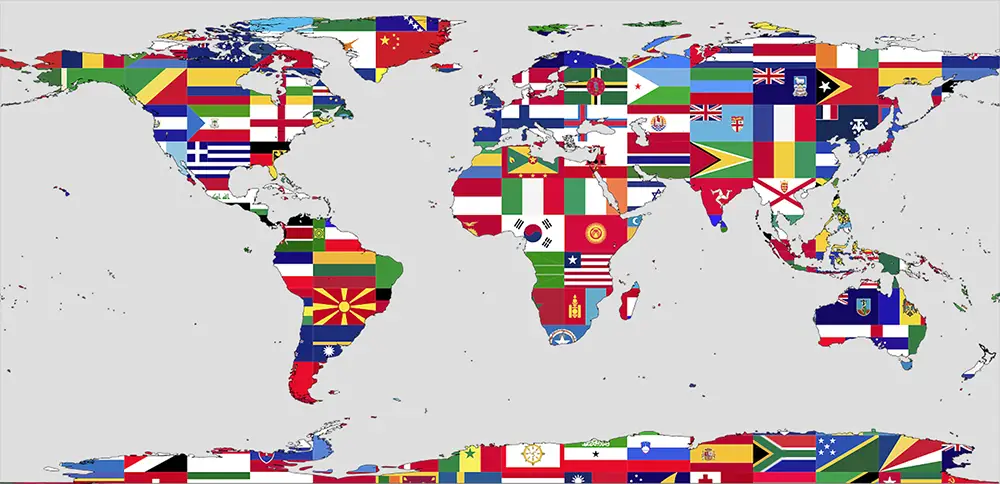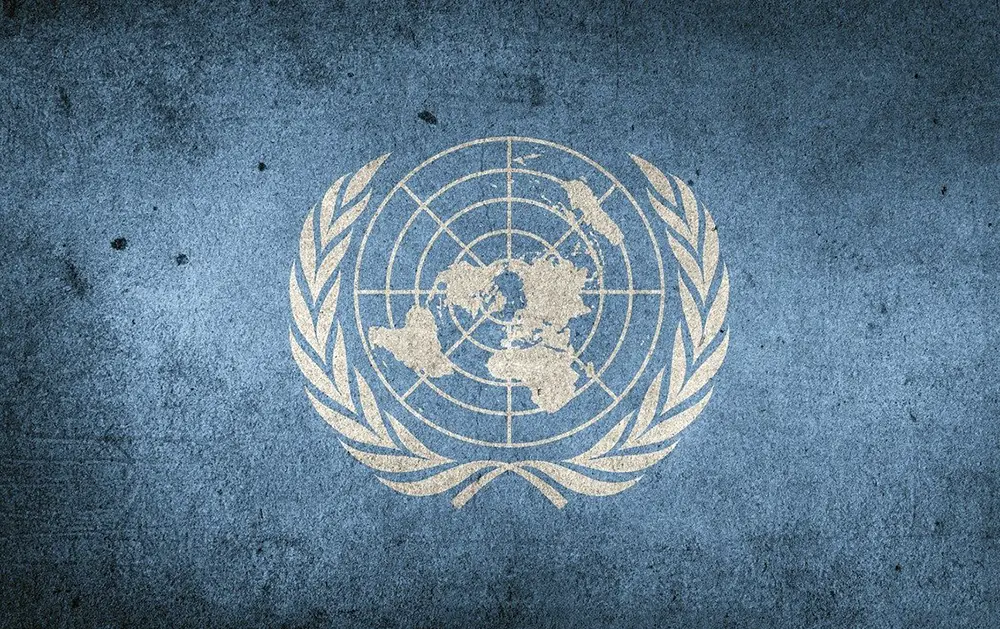When asked about their desires, a lot of people say “world peace”. Although we’ve still got a long road ahead of us, the United Nations brought us closer to it.
Here are 20 facts about the United Nations, including its history, structure, and various missions.

1. What is the United Nations?
The United Nations (UN) is the largest and most powerful intergovernmental organization that aims to maintain international peace and security, develop friendly relations among nations, achieve international cooperation, and be a centre for harmonizing the actions of nations.
2. United Nations Day
United Nations Day is celebrated internationally every year, on the October 24th. On this day, some cities choose to light up bridges and buildings with the trademark blue of the United Nations. Celebrating United Nations Day can also be done by getting to know more about this great organization and the differences it makes in your life.
3. When was the United Nations created?
Its Charter was signed on 26th of June 1945 by the representatives of 50 countries. Poland, which was not represented at the Conference, signed it later and became one of the original 51 Member States. However, the United Nations didn’t officially come into existence until the 24th of October 1945, when the Charter had been ratified by China, France, the Soviet Union, the United Kingdom, the United States and by a majority of other signatories. Ergo, October 24th became its official day.
4. The Missions of the United Nations
The main mission of the UN is to maintain international peace and security. Since 1948, the Organization has diligently protected human rights through legal instruments and on-the-ground activities. Also, the United Nations is responsible for the development and respect of the international law.
5. Who’s not part of the UN
The United Nations has 193 member states, each one having equal representation in the UN General Assembly. The two countries that are not members of the UN are Vatican City and Palestine. Vatican City does not get to cast a vote in the General Assembly, mostly because the Pope prefers not to directly affect international policy. However, Vatican City has access to all facets of the United Nations. Palestine is only a permanent observer of the United Nations because of the Israeli-Palestine conflict and its subsequent fight for independence. The UN will not allow Palestine to become a member until its conflict with Israel is resolved peacefully, preferably under a two-state resolution or pact.
6. Headquarters and main offices
As it’s an international organization, the UN completes most of its activities within certain countries. The UN’s work is divided into five geographical regions: 1) Africa, 2) Americas, 3) Asia and the Pacific, 4) Europe and Central Asia, and 5) the Middle East. The headquarters are in New York City, while their main offices are located in Geneva (Switzerland), Nairobi (Kenya), Vienna (Austria), and the Hague (the Netherlands).
7. Official Languages
The UN has six official languages. These are: Arabic, Chinese, English, French, Russian, and Spanish. A delegate may speak in any official UN language while speaking at any of their meetings. The speech is interpreted simultaneously into the other official languages. If the delegate chooses to say something in a non-official language, they must provide an interpretation or a written text of the statement in one of the official languages.
8. The UN’s Awards
Throughout the years, the United Nations won a big number of awards. For example, in 1947, the UN short film “First Steps” won the Academy Award for Documentary Short Subject. Additionally, the United Nations has won the Nobel Prize several times for its accomplishments when it comes to peacekeeping, climate change, children, and refugees among others.
9. The UN budget for 2020
This year, the United Nations marked the first time since 1973 to adopt an annual budget instead of a two-year one. The UN General Assembly adopted a budged of $3 billion. This sum provides resources to implement its 17 goals, which also include ending poverty and hunger, achieving gender equality, and taking action in order to combat the effects of climate change. As of the 15th of October 2020, 128 Member States have paid their regular budget assessments in full.
READ MORE: 25 Amazing Facts About the History of the iPod

10. Youngest UNICEF Goodwill Ambassador
In November 2018, Emmy-nominated actress Millie Bobby Brown (14 year old at that time) became the youngest-ever UNICEF Goodwill Ambassador. UNICEF was founded one year after the UN and is one of its main agencies. Its mission is to provide humanitarian and developmental aid to children worldwide.
11. Main Organs
The UN has six principal organs: 1) the General Assembly (representative organ); 2) the Security Council (ensures international peace and security); 3) the Economic and Social Council (responsible for coordinating the economic and social fields of the organization); 4) the Trusteeship Council (ensures that trust territories are administered in the best interests of their inhabitants); 5) the International Court of Justice (settles disputes between states in accordance with international law); and 6) the UN Secretariat (settles the agenda for the deliberative and decision-making bodies of the UN).
12. The UN Charter
The Charter of the United Nations establishes the purposes, governing structure, and overall framework of the UN system, including its six principal organs. It was discussed, prepared, and drafted during the 1945 San Francisco Conference, which involved most of the world’s sovereign nations. The final text was unanimously adopted by the delegates. The Charter consists of a preamble and 111 articles grouped into 19 chapters. It comprises 8.778 words.
13. The United Nations Agencies
Specialized agencies often cooperate with each other and with various UN organs. However, they have their own principles, goals, and rules. The specialized agencies are autonomous as they control their own budgets and have their own boards of directors. The most important agencies are: the International Labour Organization, the Food and Agriculture Organization, UNESCO, UNICEF, and the World Health Organization. Two of the most powerful specialized agencies are the World Bank and the International Monetary Fund. The United Nations, along with its specialized agencies, is often referred to collectively as the United Nations system.
14. Flag and Emblem
The original UN logo was created by a team of designers led by Oliver Lincoln Lundquist and was approved on the 7th of December 1946. The emblem’s design is a map of the world centered on the North Pole and inscribed in a wreath consisting of olive tree branches. The olive branches represent peace, and the world map stands for all the people and the countries. The flag consists of the emblem in white, centered on a light blue background (blue and white are official colours of the UN). The size of the emblem on the UN’s flag is one half the width of the flag itself.
15. Permanent Members
The UN Security Council consists of 15 members. Five of them (China, France, the Russian Federation, the United Kingdom, and the United States) are permanent. The other 10 are elected for two-year terms by the General Assembly.
READ MORE: 20 Facts About Stuttering You Need To Understand
16. The longest speech given at the United Nations
According to Guinness World Records, the longest statement made at the UN was given by the Indian representative V.K. Krishna Menon. His statement to the Security Council spanned over three meetings on the 23rd and the 24th January 1957. According to the times listed on the meeting records, the meetings lasted more than 8 hours.
17. United Nations Military Personnel
The UN military personnel are the Blue Helmets (also known as Blue Berets). At the moment, they consist of over 70,000 military personnel contributed by national armies from across the globe. The blue beret and helmet worn by the personnel were created during the formative days of UNEF (the first UN peacekeeping operation).
18. The UN’s Predecessor
The UN was established after World War II with the aim of preventing future wars. It succeeded the League of Nations, which lacked in effectiveness an international conflict mediator.
19. The Organization’s Secretary-General
António Guterres is the current secretary-general of the UN. He began his five-year term on the 1st of January 2017. The secretary-general of the United Nations is the head of the Secretariat. His role is described as combining the functions and responsibilities of an advocate, diplomat, civil servant, and CEO.
20. What’s in a name?
The name “United Nations”, created by the United States President Franklin D. Roosevelt, was first used in the Declaration by United Nations of 1st January 1942. In this document, representatives of 26 nations pledged their governments to continue fighting together against the Axis Powers.
We owe so many great things to this organization. Besides its fight for human rights, the United Nations also gives society hope for a better and more peaceful world. Its huge impact and effectiveness is a reason to keep updated with its efforts and policies.
Watch the video presentation about the UN:
Check out my YouTube Channel for more educational videos!
Resources: Wikipedia, UN, World Population Review, Express, Britannica, UN Peacekeeping

